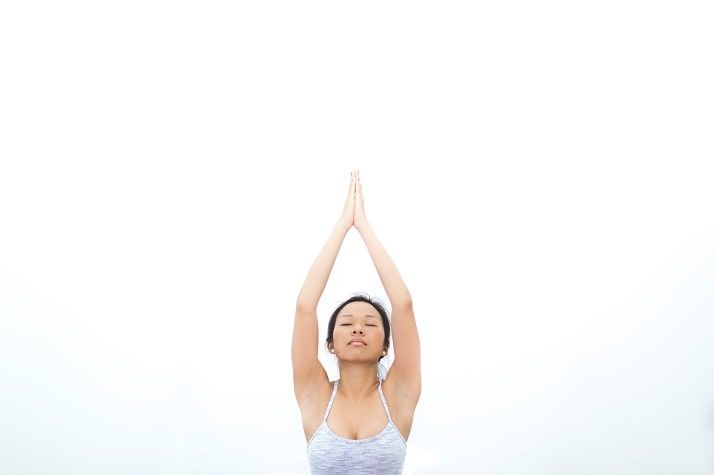Yoga offers a holistic approach to fitness, making it a perfect addition to any workout routine. Learn how to incorporate yoga into your workout routine and unlock benefits like improved flexibility, mindfulness, and recovery. In this article, we’ll dive into the advantages of adding yoga to your fitness regimen and provide practical tips for beginners on how to get started.
5 Reasons to Incorporate Yoga Into Your Workout Routine
1. Improved Flexibility and Mobility
One of the most noticeable benefits of yoga is its ability to increase flexibility and mobility. Many traditional workouts, like weightlifting or running, can tighten muscles and reduce range of motion. Yoga counteracts this by stretching and lengthening muscles, improving flexibility over time. With better mobility, you can perform other exercises more effectively and reduce the risk of injury.
The gentle stretching in yoga also helps to release tension in areas like the hips, hamstrings, and shoulders, which are commonly tight from sitting or repetitive movements. Plus, regular practice can increase your overall body awareness, helping you move more efficiently throughout the day.
Enhanced Strength and Balance
While yoga is often associated with flexibility, it’s also a powerful tool for building strength and balance. Many yoga poses, such as plank or warrior poses, require you to engage multiple muscle groups simultaneously, strengthening your core, legs, and upper body. Over time, this builds functional strength that carries over to other exercises and daily activities.
In addition, yoga helps improve your balance, which is essential for injury prevention, especially as you age. Poses like tree pose or eagle pose challenge your stability, enhancing coordination and making you more agile both in and outside the gym.
2. Mental Health Benefits of Yoga
Stress Relief and Mindfulness
One of the unique aspects of yoga is its focus on mindfulness and breathing, which makes it an excellent tool for reducing stress and anxiety. The combination of physical movement and deep breathing activates your parasympathetic nervous system, helping to calm your mind and relax your body.
Many people find that yoga serves as a form of moving meditation, allowing them to disconnect from the hustle and bustle of daily life. Incorporating even a short yoga session into your fitness routine can provide a mental reset, helping you stay focused and centered in your other workouts and daily activities.

Improved Sleep Quality
Yoga, particularly more restorative forms like Yin or Hatha, has been shown to improve sleep quality. The deep breathing and relaxation techniques used in yoga can lower cortisol levels, the stress hormone that can interfere with sleep. A brief evening yoga session can help quiet your mind, release physical tension, and set the stage for a restful night.
3. Yoga Complements Other Types of Exercise
Aid in Recovery
Yoga is a perfect complement to more intense forms of exercise like strength training, running, or cycling. The gentle stretching and controlled movements in yoga can help speed up recovery by increasing blood flow to muscles, reducing soreness, and improving range of motion.
Yoga can also aid in injury prevention by strengthening stabilizer muscles and improving joint flexibility. Incorporating yoga on your rest days or after a tough workout session is an excellent way to stay active without overloading your muscles. By learning how to incorporate yoga into your workout routine, you can improve both your performance and recovery after high-intensity sessions

Boost Overall Performance
Because yoga improves flexibility, balance, and core strength, it can enhance your performance in other areas of fitness. For example, weightlifters can benefit from an increased range of motion, allowing them to achieve deeper squats or overhead presses. Runners may notice fewer aches and pains from tight hip flexors or hamstrings. Whatever your primary fitness focus, yoga can help you perform better and recover faster.
4. Tips on How to Incorporate Yoga Into a Fitness Routine for Beginners
1. Start Small and Be Consistent
If you’re new to yoga, it’s important to start small. Aim for 10-15 minute sessions a few times a week rather than jumping into an hour-long class every day. You don’t need to be an expert or super flexible to start—yoga is for everyone. As you become more comfortable with the movements, you can gradually increase the duration and intensity of your practice.
Consistency is key, even if it’s just a short session. Regular practice will yield better results over time than sporadic long sessions. Set realistic goals and gradually build a routine that works for you.
2. Choose the Right Style of Yoga
There are many different styles of yoga, and it’s important to choose one that aligns with your goals and fitness level. Here are a few common types:
- Hatha Yoga: This is a slower-paced class that focuses on basic poses and alignment, making it perfect for beginners.
- Vinyasa Yoga: A faster-paced, flowing style of yoga that links breath with movement. It’s great for building strength and endurance.
- Yin Yoga: A slower, more meditative practice that focuses on long holds and deep stretching. It’s ideal for improving flexibility and relaxation.
- Power Yoga: A more vigorous, fitness-based approach to yoga that challenges your strength and stamina.
If you’re unsure where to start, try a few different styles to see what resonates with you.
3. Focus on Your Breath
Breathing is a foundational aspect of yoga, so pay close attention to it throughout your practice. Yoga uses a specific type of breathing called “Ujjayi breath,” which involves taking slow, deep breaths in through your nose while slightly constricting the back of your throat. This breathing technique helps you stay focused, calm, and grounded during the practice.
Don’t worry too much about perfecting the poses when you’re just starting out. Instead, focus on synchronizing your breath with your movements. This will help you get the most out of your practice, even if you’re still learning the basics.
4. Use Props for Support
Yoga props like blocks, straps, and blankets can be incredibly helpful, especially for beginners. They allow you to modify poses to match your flexibility level, helping you get into the correct alignment without straining your body. Don’t hesitate to use them—props are not just for beginners but for anyone looking to improve their practice and prevent injury. Incorporating yoga into your fitness routine can enhance flexibility and mindfulness, just like aerial fitness. Explore our aerial silks and slings at Vertical Wise to elevate your practice—literally!
5. Listen to Your Body
It’s important to listen to your body and honor your limits, especially when you’re just starting. Yoga is not about pushing yourself to the point of discomfort. It’s okay if you can’t touch your toes or hold a pose for long—your flexibility and strength will improve over time with consistent practice.
5. Yoga as a Warm-Up and Cool-Down in Your Workout Routine
Explore how to incorporate yoga into your workout routine as a warm-up or cool-down to maximize results. A few gentle poses at the start of your workout can warm up your muscles and prepare your body for more intense exercise. Post-workout yoga can help reduce muscle soreness and aid in recovery by stretching out tight areas and calming your nervous system.

Dedicate Specific Days for Yoga
Another option is to dedicate specific days to yoga practice. For example, if you strength train three times a week, you could set aside one or two days for yoga to focus on flexibility and recovery. This approach helps balance high-intensity workouts with lower-impact, restorative sessions, leading to a well-rounded fitness routine.
Conclusion: Yoga for Body and Mind
Incorporating yoga into your fitness routine is a simple but powerful way to improve both your physical and mental well-being. From boosting flexibility and strength to reducing stress and aiding in recovery, yoga offers a range of benefits that can enhance your overall fitness.
Whether you’re new to exercise or a seasoned athlete, adding even a small amount of yoga into your weekly routine can make a big difference. Start slow, listen to your body, and enjoy the journey—yoga is about progress, not perfection.
What are your favorite yoga poses or tips for beginners? Feel free to share your thoughts in the comments below!







